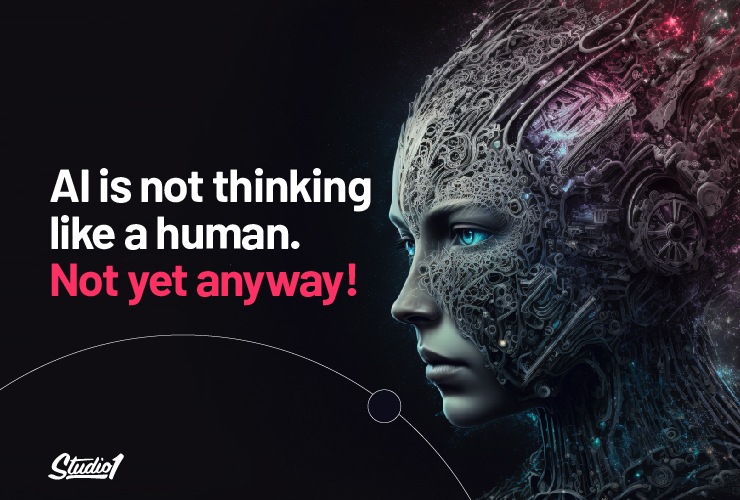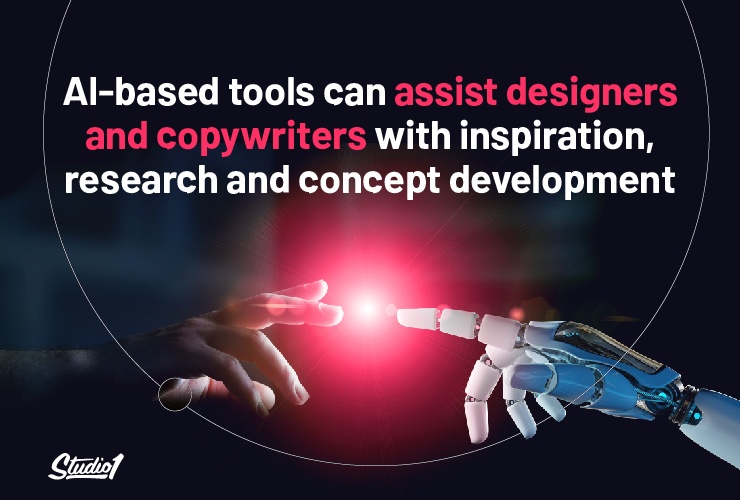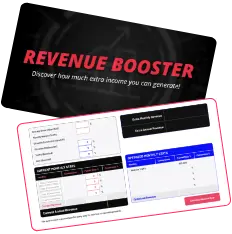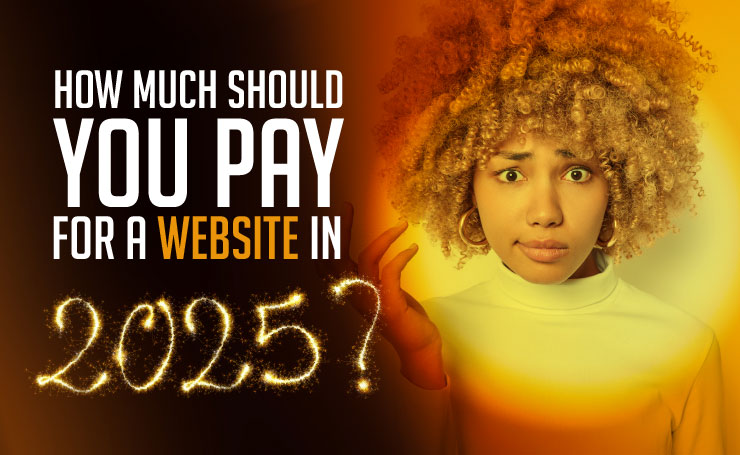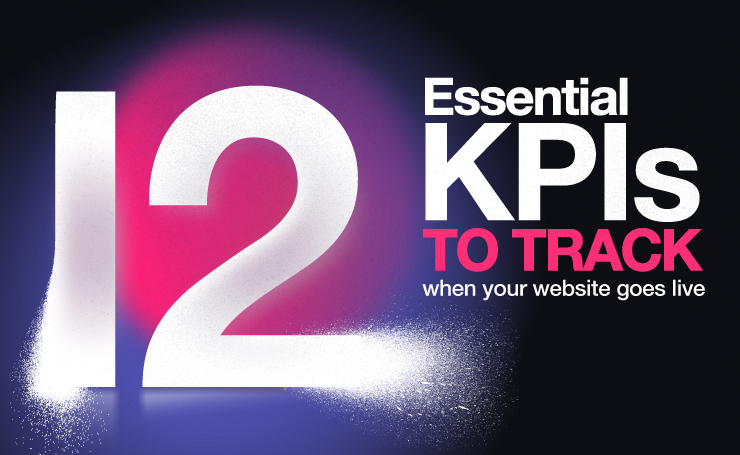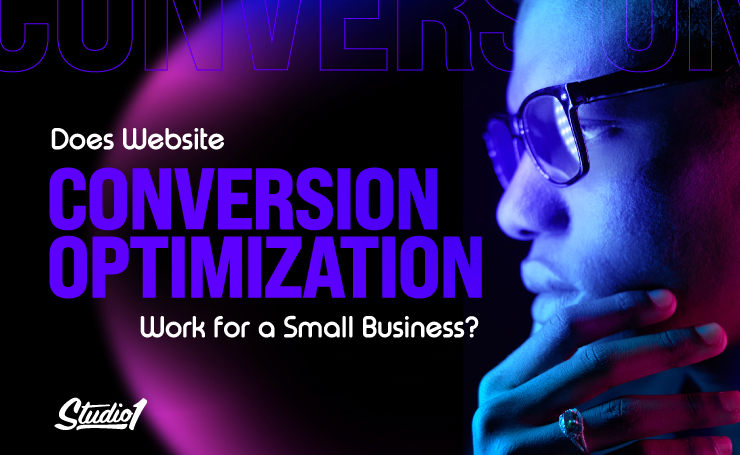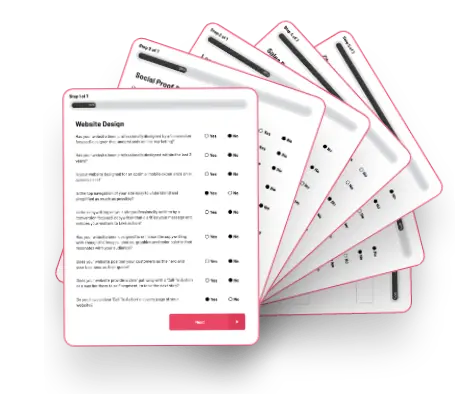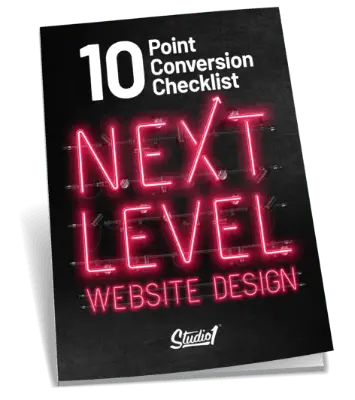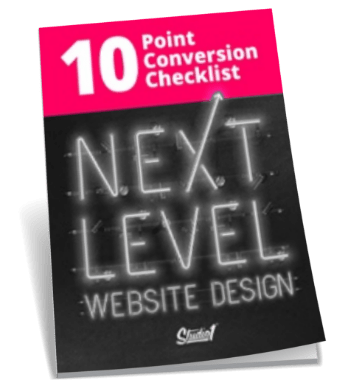You may have heard the hype around the super-impressive new AI tool called ChatGPT. It deserves the hype and, in the web design world, it has sparked a whole new round of discussion about Artificial Intelligence (AI) and how useful it is for creating websites.
So let’s unpack AI and see if it can replace humans in creating engaging conversion-focused websites.
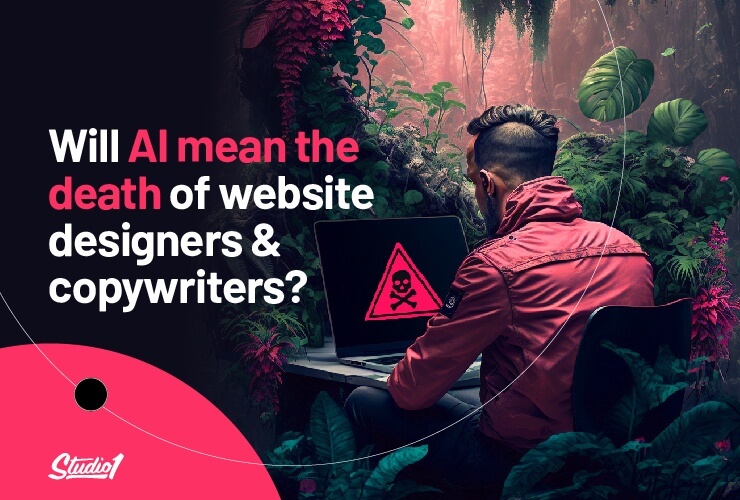
Let’s start with ChatGPT. Released in November 2022, it’s the world’s first AI-driven text generation tool. It uses machine learning to create realistic text that sounds like it was written by a human. It’s built on top of OpenAI’s GPT-3 language model and is fine-tuned with both supervised and reinforcement learning techniques.
Many other AI-based tools are increasingly being used in websites. A few examples include:
- Microsoft’s Sketch2Code which can generate HTML code from a hand-drawn website sketch
- DALL-E (also from OpenAI) offers AI-generated images based on an input text description
- Canva has integrated the AI text-to-image tool ‘Stable Diffusion’ into its product offering
- Github’s Co-Pilot utilizes the OpenAI Codex to provide real-time code suggestions and complete functions directly within your text editor
- PlaygroundAI & MidJourney can generate AI imagery and designs
- You can see more AI tools over at Futuretools.io
These AI tools are super impressive, however, they learn by using all of the content that humans have already created and published on the web, so they wouldn’t exist without human creativity, which means you really have to be careful with copyright issues, plus you need to fact check what it creates for you.
Many people are intimidated by AI, but I question if they’ve actually tried AI tools properly. Give them a chance and you’ll find they can be amazing tools that can generate ideas, and help speed up the process of creating copy, images, and designs.
You may be old enough to remember paper maps and street directories for your car. Then satellite navigation (GPS) came along. Some people embraced GPS, while others resisted and kept using their old-fashioned maps. Now all new cars have a GPS, and even people who resisted changing from paper maps are using GPS because it’s so much easier to use.
Just like GPS, think of AI as your assistant. You’re the captain with the strategy and AI is your tool for doing all the other stuff that’s needed to action your plan – all the stuff that takes time and that you don’t like doing anyway!
So give the AI tools a go if you haven’t already and be one of the early adopters. Embrace the new AI technology now or it may be too overwhelming if you leave it too long, as it gets smarter.
AI is not thinking like a human. Not yet anyway!
Here are some of the current benefits and limitations of AI….
AI Art & Website Design Tools
- DALL-E
- Stable Diffusion
- Deep Dream
- Midjourney
- Magician For Figma
- Github Copilot
Benefits
- You can make impressive images without being a graphic designer
- You can quickly build trial images and even home page designs, to explore your customer’s likes and dislikes
- You can get inspiration – better than staring at a blank page
- More fun / faster than searching stock image libraries – once you’ve learned the necessary skills
- Github’s Copilot can generate website code to speed up the website building process
Limitations
- There is a steep learning curve to understanding effective prompts used for AI to generate relevant images
- AI-generated images start with existing images that have already been published, so you won’t know whether the AI has picked up copyrighted materials
- The images AI produces may not match your vision, so you may need to keep creating new images until you get what you want
- AI can design a web page however it is just a static image that cannot be edited. You still need to recreate the design on a website platform
AI content writing tools
- ChatGPT
- Sphere
- Word AI
- BLOOM
- Jasper
- AI Writer
Benefits
- You’ll no longer have writer’s block
- You can get a whole package of automatically generated headings, taglines, page content and blog posts
- Simulated content helps clients evaluate the design much more easily than meaningless “lorem ipsum” text
- Content can be produced on demand at any time, which can be helpful if you need content fast
Limitations
- You have little or no information/control over what the AI has been trained on
- You need to know how to prompt for the content you want
- You won’t know whether they’ve picked up copyrighted materials
- The AI may not understand your target market or be aware of their needs and drivers
- You could well get content that’s readable, but not compelling to your audience
What does this all mean for website design?
The power of AI-based tools is in the way it can assist designers and copywriters with inspiration, research, and concept development.
There is definitely a learning curve on how to use the AI tools, and I encourage you to take the time to invest in learning how to use them or at least have your team learn AI. There are new skills to develop – because you need to know how to tell the AI what you want.
There’s considerable power in AI tools however for now you will need to be fairly tech-savvy and able to function over multiple platforms.
AI is so new that the legislation and laws are lagging behind – the AI implications around copyright, ownership, and so forth have yet to be sorted out. Plus if you don’t know what the AI has been trained on, you’ll still need to do due diligence on what it produces for you.
These tools are currently freely available to the public for general use across multiple channels, which means that their developers are most likely preparing for the next generation of product innovation, to improve AI capabilities.
For now, you may find AI-generated websites useful if you are a micro-businesses or startup an AI-generated website may be good enough for you to test your offer.
Watch this video to show you how basic AI’s capability is currently for creating a website:
For more established businesses who want websites that are high-converting & 24/7 marketing machines, AI just isn’t capable for now.
Your website needs more than just a pretty design
There’s much more to a high-performance, marketing-machine website than writing readable articles or creating heroic-looking feature images.
Designing a compelling website experience that turns visitors into prospects and prospects into customers is about a LOT more than choosing a color scheme, writing a bit of copy and arranging some images.
A high-converting website…
- Helps you stand out from the crowd
- Delivers exceptional user experience that engages your visitors
- Is designed to create desire and turn your visitors into action-takers
- Industry leaders invest in professionally designed websites because they recognize that it increases the perceived value of their offer
They know if they settle for a website that is average-looking, that lacks clarity or is not designed with conversions in mind, they may not be seen as a leader in their space.
They understand the power of their brand, and the importance of their website reflecting that brand.
To encourage your website visitors to take action, you need to have a well-thought-out brand, a marketing strategy, and a website that appeals to your target audience.
This includes:
- A stylish color palette
- A considered set of images and graphics
- Effective videos and photography
- High-converting copy, professionally written to leverage psychological drivers
- The right visual hierarchy and flow to entice people to take action
Get all of this right, and your website will convert more visitors into action-takers!
“Your brand is what other people say about you when you’re not in the room” – Jeff Bezos (Amazon)
Today’s AI doesn’t tick all the boxes
The AI design tools I’ve tested so far don’t deliver what’s needed… yet.
The tools that I’ve explored definitely have massive potential to assist designers and copywriters, to help make them more productive – but they’re not (yet) a viable replacement for the creative-thinking, trend-making, and marketing intelligence of a professional web design studio.
Can AI build a website that creates desire? I don’t think so.
Your website should create desire in your visitors – a desire for the results and benefits that you offer.
A custom website design that’s focused on conversions will be memorable and will continue to be an effective marketing machine well into the future.
Here are some key questions I haven’t seen answered yet
AI can take input from you and produce a basic website layout and copy, BUT:
- If AI is learning from existing websites, just how unique can an AI website be?
- Does AI, on its own, have the ability to create a unique and custom design that’s completely different to your competitors?
- What if you and your competitors end up with a very similar website created by AI because your input was very similar?
- Could there be copyright issues?
- Will your website be boring and unremarkable?
- Do AI websites have strategic visual hierarchies and flows that create desire and lead visitors through a structured sales funnel?
- Can AI truly understand your business, your audience, AND your offer?
- Is it possible for AI to work out a multi-purpose design strategy – one that will cater to all your visitors whether they are cold, warm or hot leads?
AI offers a leap forward in website design productivity
AI is undoubtedly going to disrupt the web design industry.
It is already proving itself to be a game-changing tool for FOR industry professionals, however, it will not replace them.
AI is likely to enable a faster, more targeted starting point, and potentially support a more streamlined process.
Where the technology goes next is anybody’s guess.
Despite advancements, AI still struggles with the social and legal framework in which businesses operate, so users will need to manage business risks like plagiarism and copyright.
Websites created by AI could be useful for startup businesses with limited reputations and investments if they are:
- still too “lean” to invest in design, or
- still working out their core value proposition, their target customer base, etc.
AI websites could potentially work for high-demand micro-businesses, who really just need a brochure website, but not a lot of brand distinction.
On the other hand, established businesses with a strong reputation in their market should consider the risks of adopting an AI-designed website in 2023.
That being said, it could be worth exploring what AI can do for you – because there are an increasing number of things that AI does well. But think carefully before you commit to a fully AI-generated website.
Think about it like this…CAD programs may have put some drafts-people out of work, but not the engineers; and word processors may have replaced typewriters but didn’t replace the authors.
Should you use AI to create your next website?
Established businesses with a popular offer who are considering a website overhaul have three choices:
- You could spend your time and resources trying to design and build your new website from scratch
- You can try to have an AI tool design your website and hope that it will still rank well, and drive lots of leads and sales BUT what if it’s a complete failure and your audience loses trust in your brand?
- You could invest in the future of your brand, with a custom website that’s unique to your business. A website with a clear strategy and marketing funnels structured to cater to your audience segments, designed by a team that has designed thousands of successful websites.
If you know your website needs a makeover, and you’re not willing to risk your online reputation with an under-designed AI website—then book a Free Strategy Call with us to discuss your website goals.
This won’t be a hard sell; just a friendly, informative chat to help you identify what is most important to turn your online business presence into a high-class digital marketing machine.
